Animals & Plants
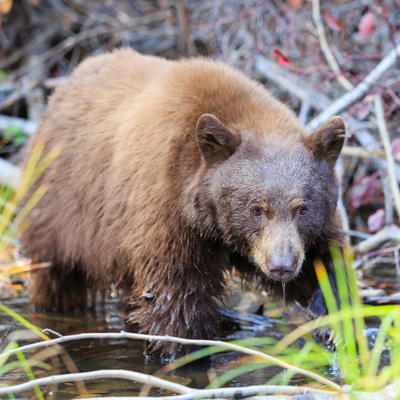
Black Bear
One of Tahoe’s most loved and well-known wildlife species is its black bears. Tahoe's bears are typically nocturnal, but can also often be spotted during the day. They are smart, curious and opportunistic omnivores, and their diet varies by season. In Tahoe, they increasingly rely on human trash for sustenance. Each summer, newspapers are filled with stories of bears breaking into houses, and being unnecessarily killed by wildlife officials. For more information on safely and humanely deterring bears, visit the Bear League. |
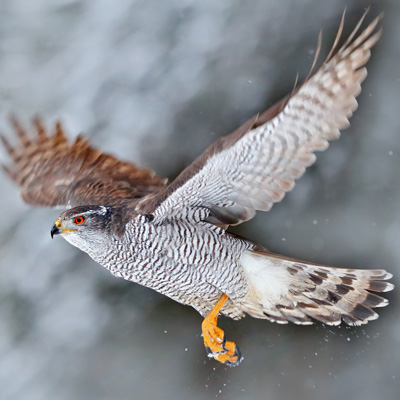
Northern Goshawk
The Northern Goshawk is a raptor that lives in forests and preys on rodents and birds. Goshawks have long been a part of the Lake Tahoe Basin ecosystem. They live at the lake year-round and breed from lake level to tree line. Studies have shown that more than 90 nests are scattered about Tahoe’s forests. The birds are listed as a species of special interest by the TRPA, Forest Service and the states of California and Nevada. Current potential stressors to goshawks include urbanization, motorized and non-motorized recreation on forest trails and roads, felling trees for fire reduction, and ski resort-related development. Development and recreation plans must ensure the species is protected by interfering as little as possible with identified nesting and hunting sights. |
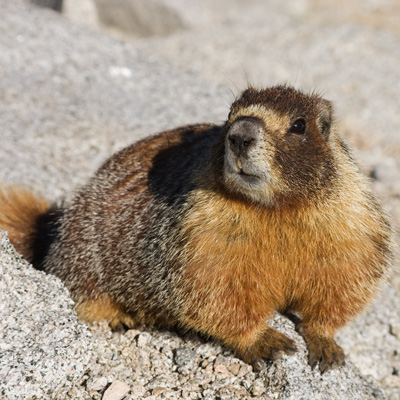
Yellow-Bellied Marmot
You may hear a strange “chuck," whistle or trill at the top of one of Tahoe’s rocky peaks or high elevation meadows and soon realize that it is coming from the yellow-bellied marmot. A great place to see marmots in Tahoe’s wild is Desolation Wilderness. The Tahoe Basin’s high elevation is suitable for these creatures, which generally live above 6,500 feet. Marmots are active during the day and are omnivores. |
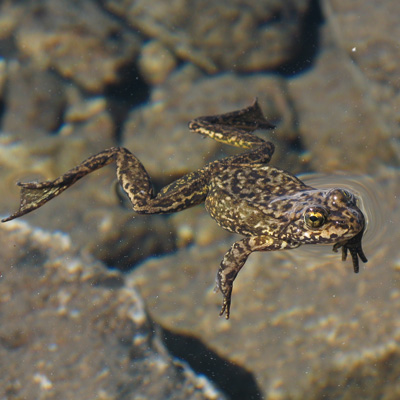
Mountain Yellow-legged Frog
Although the higher elevation smaller lakes and tributaries to Lake Tahoe have historically been ideal habitats for the mountain yellow-legged frog, the introduction of non-native fish species over the past century have threatened the frogs through predation. They survive in only 20 percent of their historic habitat. You may spot one of these amphibians by noticing the yellow or orange underside of their legs and bodies. The U.S. Forest Service has recently tried to reintroduce the yellow-legged frog to lakes in several wilderness areas, including lakes Tamarak, Cagwin, Ralston, Lucille, Margery, Jabu and LeConte. |
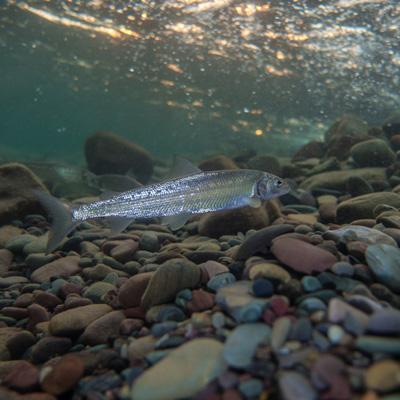
Mountain Whitefish
The mountain whitefish is a trout-like, silver to dusty green fish found in Lake Tahoe. Mountain whitefish are members of the salmon and trout family and can be found in lakes, rivers, and streams throughout the Northwest United States. The Lake Tahoe population of mountain whitefish represents the southwestern distribution of the species. This fish is a bottom feeder that will occasionally feed opportunistically on hatching insects at the waters’ surface. The mountain whitefish spawn from October to December and hatches occur in the early spring. The oldest recorded mountain whitefish was 18 years old, but the typical lifespan is 8 to 9 years. In Lake Tahoe, mountain white fish can be caught throughout the winter months and are tasty to eat. |
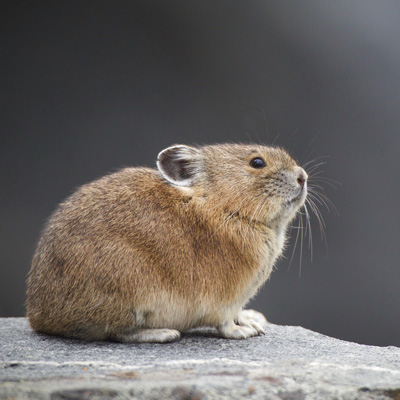
Pika
Look closely to make sure you don’t confuse a marmot’s whistle with the pika’s high pitched call. Like the Marmot, pika can also be seen around the tops of Tahoe’s rocky peaks. Pika live at cooler high elevations because they are sensitive to warm temperatures. Climate change is a serious threat to these animals because as temperatures rise in the Tahoe area, the pika will have nowhere higher or cooler to go. Although pika look like rodents, they are actually a type of rabbit. Pika survive Tahoe’s snowy winters at the tops of peaks by stacking plants within their shelters for food and insulation. |
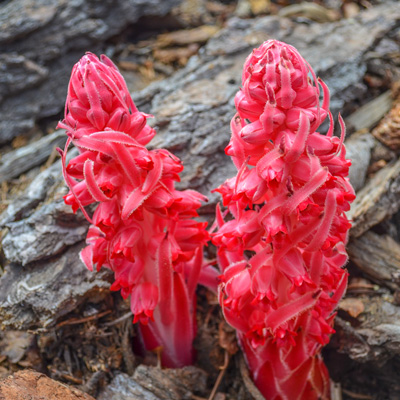
Snow Plant
This beautiful and unusual plant can be seen in spring-time among melting snow patches in Tahoe’s forests. The snow plant does not contain chlorophyll like most green plants, which can be seen in its bright crimson color. These plants are parasitic, feeding off of soil fungi attached to green plants’ roots, where the fungi garner sugar, water and nutrients. |
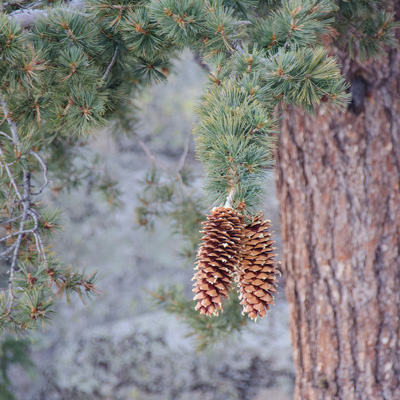
Sugar Pine
The sugar pine has the largest cone of any conifer species, with cones up to 26 inches long. The sugar pine is a member of the white pine group, and can be found throughout the Sierra and Cascade mountain ranges. Sugar pines have 2- to 4-inch needles in bundles of five. John Muir once called the sugar pine the “king of the conifers.” The sugar pine, along with all North American white pines, are under attack by the Eurasian white pine blister rust. The blister rust is a fungus that was introduced from Europe in 1909. The Lake Tahoe Basin is center stage for an effort to find sugar pines that are genetically resistant to the foreign blister rust. To find out more, visit the Sugar Pine Foundation. |
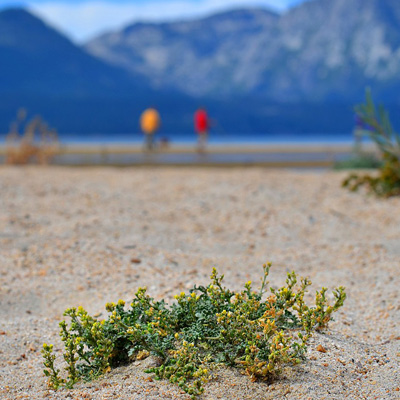
Tahoe Yellow Cress
Tahoe’s sandy shores are the only places in the world that the Tahoe Yellow Cress grows. Lake Tahoe, unlike other Sierra Nevadan lakes, has had a unique geologic history leading to the evolution of this rare species only at Lake Tahoe. Its rootstocks allow shoots to spread and emerge upslope or down-slope depending on water levels. Tahoe Yellow Cress is currently listed as endangered in both Nevada and California. This low-growing, perenial mustard has been impacted by beach goers and shoreline development. If you see it while visiting one of Tahoe’s beautiful beaches, please tread lightly and avoid the fenced areas. |
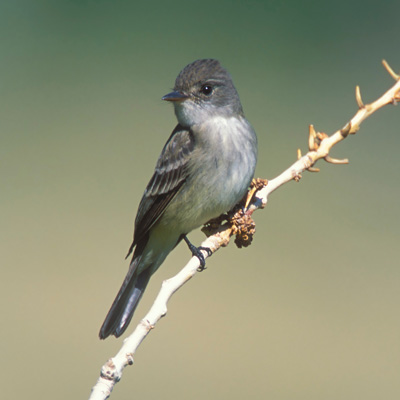
Willow Flycatcher
Although the drab-colored willow flycatcher may not be as readily spotted as the more brightly colored Steller’s jay or western tanager, the willow flycatcher is an important indicator of ecosystem health as it lives in fens and meadows in the Tahoe Basin. It will sometimes perch in a willow to catch insects flying by or hover over vegetation picking off unsuspecting insects. These bird and its habitat are sensitive to human impacts. |
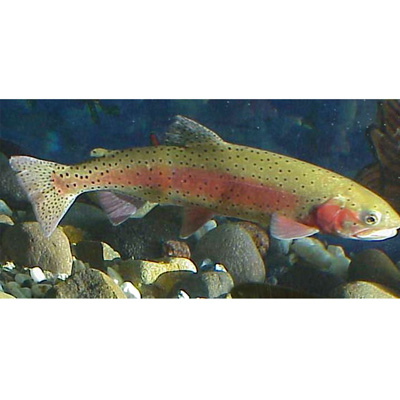
Lahontan Cutthroat Trout
Historically, only a few species of fish lived in Lake Tahoe. The Lahontan Cutthroat Trout was the dominant fish. Large and long-lived, it grew to an impressive 50 inches in length and weighed 40 pounds. Native people throughout the Great Basin depended on the trout for their livelihood. However, the Lahontan cutthroat’s fate changed dramatically during the 19th and 20th centuries. The fish were caught in high numbers to sustain the towns and mining camps of the growing West. Dams and development destroyed habitat. By 1970, the fish were listed as an endangered species. In 1975, that classification was lowered to “threatened.” Extensive efforts are underway to restore the Lahontan cutthroat to its traditional range. |
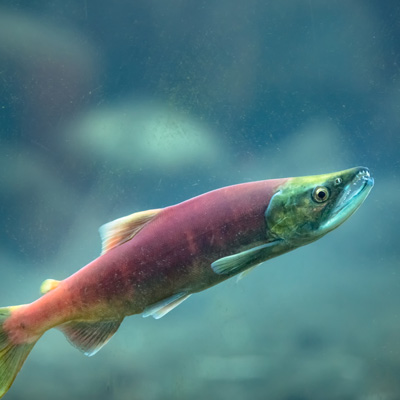
Kokanee salmon
Tahoe’s most famous non-native fish is its kokanee, which spawn in Taylor Creek every fall. These small red salmon were introduced to the lake in 1944, and are a landlocked cousin of sockeye salmon. The U.S. Forest Service operates a visitor center and underground viewing station at Taylor Creek. |




